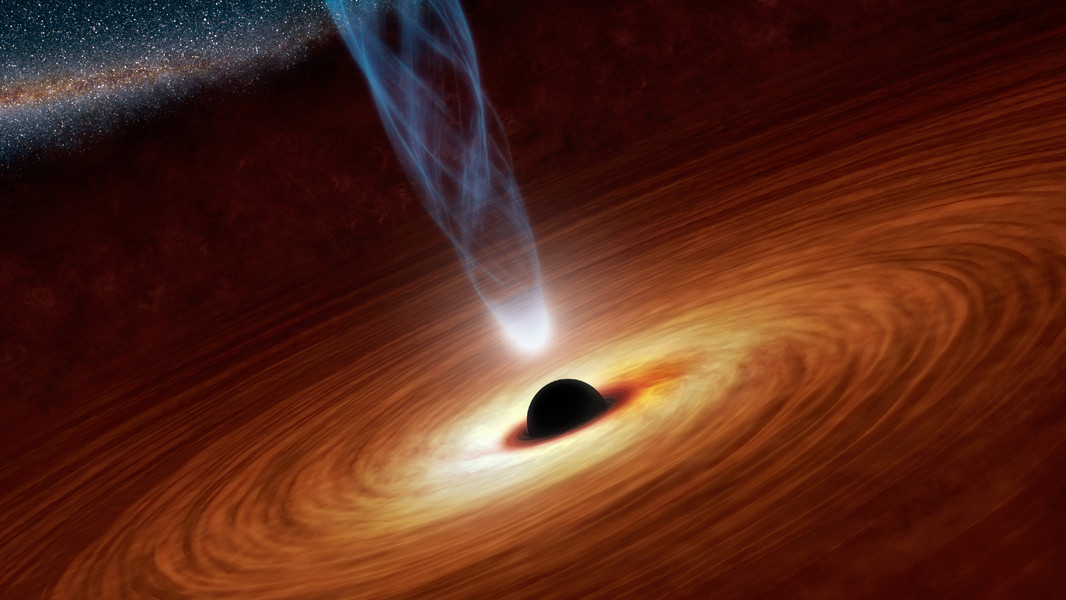In 1974, astronomers detected a massive source of radio wave emissions coming from the center of our galaxy. Within a few decades time, it was concluded that the radio wave source corresponded to a particularly large, spinning black hole. Known as Sagittarius A, this particular black hole is so large that only the designation “supermassive” would do. Since its discovery, astronomers have come to conclude that supermassive black holes (SMBHs) lie at the center of almost all of the known massive galaxies.
But thanks to a recent radio imaging by a team of researchers from the University of Cape Town and University of the Western Cape, in South Africa, it has been further determined that in a region of the distant universe, the SMBHs are all spinning out radio jets in the same direction. This finding, which shows an alignment of the jets of galaxies over a large volume of space, is the first of its kind, and could tell us much about the early Universe.
Continue reading “Supermassive Black Holes In Distant Galaxies Are Mysteriously Aligned”


